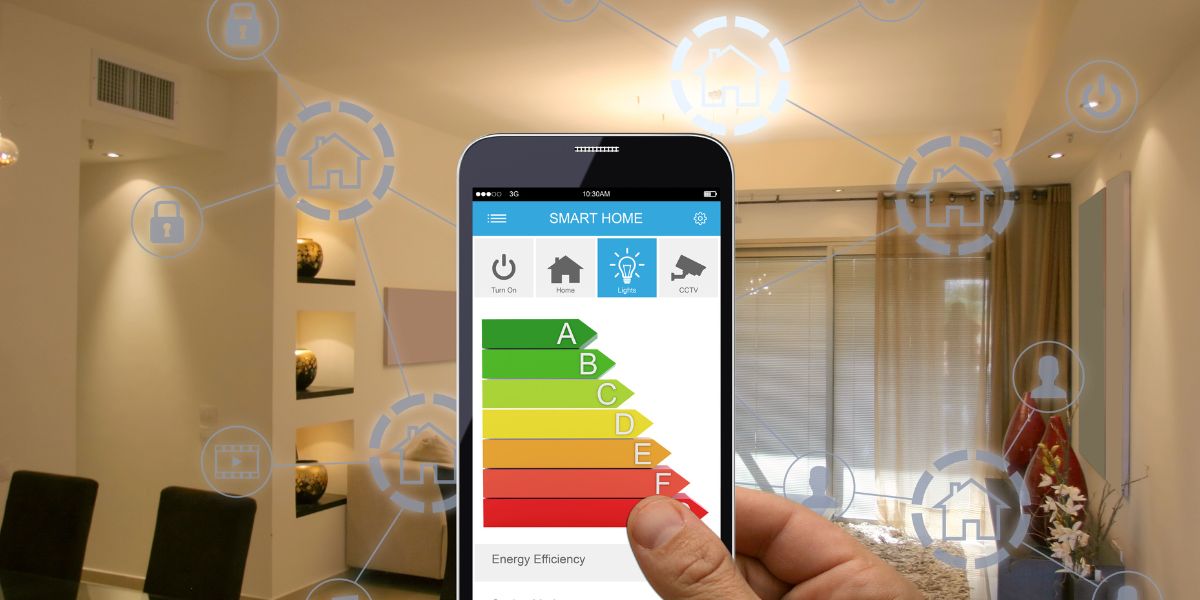
By incorporating home automation into your living space, you can transform the way you interact with your home's energy consumption. Imagine being able to adjust your thermostat automatically based on your preferences or ensuring your lights are only on when needed. These are just a few ways in which home automation can revolutionize your energy efficiency. But there's more to discover beyond the basics; the potential for increased savings and reduced environmental impact might surprise you.
Benefits of Home Automation for Energy Efficiency
By automating your home's energy usage, you can significantly reduce waste and save money on utility bills. Smart plugs, for example, allow you to control when devices are powered on or off, preventing energy vampires from draining electricity when not in use. These devices are easily programmable, enabling you to create schedules that align with your daily routines.
Automating your lighting with smart bulbs can also lead to substantial energy savings. By setting timers or using motion sensors, your lights will only be on when needed, reducing unnecessary usage.
Furthermore, integrating smart sensors into your home automation system can optimize your energy efficiency. These sensors can monitor factors like temperature, humidity, and light levels, adjusting settings accordingly to ensure energy isn't wasted. For instance, if a room is unoccupied, the sensor can signal the HVAC system to reduce heating or cooling, saving energy without sacrificing comfort.
Smart Thermostats and Energy Savings
Enhance your home's energy efficiency with the installation of smart thermostats, optimizing temperature control for significant energy savings. Smart thermostats learn your heating and cooling preferences and adjust settings accordingly. By intelligently regulating your home's temperature based on your schedule and habits, these devices can help reduce energy waste and lower utility bills.
One key feature of smart thermostats is their ability to be controlled remotely through mobile apps. This means you can adjust the temperature of your home even when you're not there, ensuring that energy isn't wasted when no one is home. Additionally, some smart thermostats offer energy usage reports, allowing you to track your consumption and identify ways to further optimize energy efficiency.
Automated Lighting Control Techniques
Optimize your home's energy usage with automated lighting control techniques that adjust illumination based on occupancy and natural light levels. By incorporating motion sensors, your lights will automatically turn on when you enter a room and off when you leave, ensuring that lights are only in use when needed.
Additionally, photo sensors can detect natural light levels and dim or brighten artificial lighting accordingly, reducing energy consumption during daylight hours.
Using timers and schedules, you can program your lights to turn on and off at specific times, helping you avoid leaving lights on accidentally. This feature is especially useful when you're away from home for extended periods, giving the appearance of someone being present and enhancing security.
Furthermore, smart lighting systems allow you to control your lights remotely through a smartphone or voice commands, enabling you to adjust settings even when you're not at home. This flexibility ensures that you can always optimize your lighting for energy efficiency, making a significant impact on your overall energy consumption.
Managing Appliances for Lower Energy Consumption
To further reduce your household's energy consumption, consider managing your appliances more efficiently. Start by utilizing energy-efficient appliances whenever possible. Look for appliances with the ENERGY STAR label, indicating they meet high energy efficiency standards.
When using your appliances, make sure to only run full loads in your dishwasher and washing machine. Partial loads waste energy and water. Additionally, consider investing in smart power strips that can detect when devices are in standby mode and cut off power to prevent energy drain.
Another way to manage your appliances for lower energy consumption is by adjusting your refrigerator and freezer settings. Set your refrigerator between 36-38°F (2-3°C) and your freezer at 0-5°F (-18 to -15°C) to optimize energy usage. Regularly defrost your freezer to maintain efficiency.
When cooking, match the size of your pots and pans to the size of the burner to minimize energy loss. Lastly, unplug chargers and small appliances when not in use to prevent phantom energy consumption, further reducing your overall energy usage.




